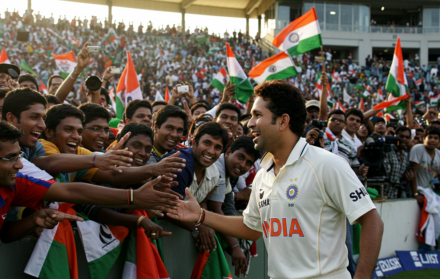
Whats The Future Outlook Of The Ashes Series In Modern Day Cricket
The Ashes Series, one of the oldest and most prestigious cricket tournaments, holds a significant place in the history of the sport. However, in the rapidly evolving landscape of modern-day cricket, the future outlook of the Ashes Series has come under scrutiny.
To understand the future of the Ashes, it is crucial to first delve into its introduction and importance. The Ashes Series originated in 1882, following England’s first-ever defeat to Australia on English soil. Since then, this iconic bilateral contest has become a symbol of intense rivalry and cricketing excellence between the two nations.
Yet, modern-day cricket has witnessed various changes and adaptations to keep up with the evolving interests of players, fans, and financial considerations. The rise of shorter formats like T20 cricket has ushered in a new era of fast-paced, high-intensity gameplay, captivating a broader audience and generating significant revenue.
Furthermore, even the traditional format of Test cricket has undergone modifications, such as day-night matches and the introduction of a World Test Championship.
These changes in modern cricket significantly impact the Ashes Series. Firstly, the demanding cricket calendar and the high workload on players pose scheduling challenges that can potentially affect the availability and performance of key players.
Financial considerations play a significant role in the future of the Ashes, as the tournament’s success relies on attracting sponsors, broadcasters, and maintaining fan engagement both at stadiums and through TV ratings.
Looking ahead, the future of the Ashes Series appears to be influenced by technological advancements and innovation. The use of technology to improve umpiring decisions, fan experiences, and broadcasting coverage is likely to shape the future direction of the tournament.
The growing globalization of cricket, with newer nations emerging as strong contenders, may lead to changes in the format and structure of the Ashes, reflecting the broader landscape of the sport.
The Importance and History of the Ashes Series

The Ashes series, with its rich history and immense importance, holds a prominent place in the world of cricket. This biennial Test match series, played between England and Australia, dates back to the inaugural encounter in 1882. Since then, it has evolved into one of the most iconic rivalries in the sport.
The Ashes symbolize not only the intense competition but also the deep-rooted cricketing traditions shared between these two nations. The prestigious Ashes trophy itself stands as a testament to the historical significance of the series, containing the ashes of a burnt cricket bail.
With each passing year, the Ashes series continues to produce unforgettable matches and nurture the growth of legendary players, adding to its highly anticipated stature in the cricket calendar.
Evolution and Changes in Modern-Day Cricket

In the ever-evolving world of cricket, the game has witnessed tremendous changes and transformations. Brace yourself as we dive into the fascinating realm of modern-day cricket. We’ll explore the impact of shorter formats like T20 cricket, as well as the notable changes experienced in Test cricket.
Get ready to uncover the exciting shifts and developments that have shaped the future outlook of the beloved Ashes series.
Shorter Formats and T20 Cricket
Shorter Formats and T20 Cricket have completely transformed today’s cricket, providing a fast-paced and thrilling gaming experience that appeals to a broader audience.
- Increased entertainment value: T20 Cricket, renowned for its shorter match duration and focus on aggressive batting, creates exhilarating moments and high-scoring games.
- Globalization of cricket: Shorter Formats have played a pivotal role in expanding the popularity of cricket beyond its traditional cricket-playing nations.
- A platform for emerging talent: T20 Cricket offers incredible opportunities for young players to showcase their skills and establish a prominent reputation.
- Commercial success: Shorter Formats have attracted lucrative sponsorships, television deals, and massive crowds, significantly contributing to the financial growth of the sport.
Fact: The first T20 International match was held on February 17, 2005, at Eden Park in Auckland, New Zealand, between Australia and New Zealand.
Changes in Test Cricket
- Introduction: Test cricket has undergone several changes over the years to adapt to the evolving needs of the game.
- Day-Night Tests: The introduction of day-night tests, with the use of pink balls, has added a new dimension to the traditional format of the game.
- Player workload management: With the increased number of cricket formats and competitions, there has been a growing emphasis on managing player workload to prevent burnout and injuries.
- Technology and review system: The implementation of technology, including the Decision Review System (DRS), has played a crucial role in ensuring fair outcomes in test matches.
- Focus on result-oriented pitches: There has been a shift towards preparing pitches that offer more balanced contests between bat and ball, aiming to produce definitive results.
- Changing fan expectations: As fan preferences have evolved, there is greater emphasis on providing a more engaging and spectator-friendly experience, leading to innovations such as day-night tests and enhanced crowd interaction.
Throughout its rich history, Test cricket has constantly adapted to keep up with the changing demands of the game. From introducing day-night tests and managing player workloads to embracing technology and focusing on result-oriented pitches, Test cricket has evolved to maintain its relevance and excitement.
These changes have not only enhanced the game’s competitiveness but also catered to the evolving expectations of fans, providing a more engaging and immersive experience. As Test cricket continues to evolve, it will be fascinating to see how it embraces further innovation and adapts to the ever-changing landscape of the sport.
Impact of Modern-Day Cricket on the Ashes Series

Cricket enthusiasts, brace yourselves as we dive into the electrifying world of the Ashes Series and its fascinating relationship with modern-day cricket. In this section, we’ll uncover the impact of the ever-evolving game on this iconic test battle.
From grueling player workloads to intricate financial considerations and the magnetism of fan engagement and TV ratings, we’ll explore the multifaceted elements that shape the future outlook of the Ashes Series. Prepare for a captivating journey where tradition meets innovation in the realm of cricket’s most celebrated rivalry.
Player Workload and Scheduling Challenges
Managing player workload and scheduling challenges is crucial in modern-day cricket to ensure the well-being of players and the sustainability of the game. This involves careful planning and coordination between cricket boards, players’ associations, and tournament organizers.
| Challenge | Solutions |
| Player Workload and Scheduling Challenges. | Implementing proper scheduling that allows sufficient rest periods between matches and series. |
| International and domestic commitments. | Coordinating schedules to minimize conflicts and avoid overburdening players. |
| Player fatigue and injury risk. | Monitoring player workloads and managing match participation to prevent burnout and injuries. |
Suggestions:
- Utilize technology to gather and analyze player data for workload management.
- Implement player rotation policies to give opportunities to backup players and reduce the burden on key players.
- Consider the mental well-being of players and provide adequate support through psychologists and stress management programs.
Financial Considerations
Financial considerations have a significant impact on the Ashes series, influencing various aspects of the tournament.
- Revenue Generation: The financial success of the series depends on generating revenue through sponsors, ticket sales, broadcasting rights, and merchandise.
- Player Salaries: The financial aspect also encompasses player contracts and salaries, with top players earning substantial amounts for their participation in the series.
- Venues and Infrastructure: Host countries and cricket boards need to consider financial planning and allocate resources to invest in infrastructure and facilities for successful matches.
- Economic Impact: The series also has a broader economic impact on the host country, benefiting local businesses, tourism, and the overall economy.
Considering these financial considerations, it is crucial for cricket boards and organizers to strike a balance between maximizing revenue and upholding the integrity and tradition of the Ashes series.
This can be accomplished by implementing effective financial strategies, exploring innovative sponsorship opportunities, and ensuring fair distribution of revenues.
Fan Engagement and TV Ratings
Fan engagement and TV ratings are essential for the success and popularity of the Ashes Series in modern-day cricket. Various factors contribute to this:
- The intense rivalry between England and Australia creates immense excitement and anticipation among fans, ultimately leading to a significant increase in viewership.
- High-quality production and coverage of the matches enhance the viewing experience, attracting more viewers and boosting fan engagement.
- The engaging personalities of the players also play a vital role in connecting with the fans and generating interest in the series.
- Active participation and interaction on social media platforms contribute to fan engagement, allowing them to stay connected and engaged throughout the series.
- Moreover, easy accessibility to live broadcasts and highlights ensures that fans can conveniently watch the matches, which ultimately leads to higher TV ratings.
Fact: The 2019 Ashes series witnessed a remarkable increase in both fan engagement and TV ratings, with record-breaking viewership numbers across various platforms.
Future Outlook of the Ashes Series

As we look into the future outlook of the iconic Ashes series, we uncover fascinating sub-sections that shape its destiny. From the role of technology and innovation to the growing globalization of cricket, and the potential changes in format and structure, this section delves into the exciting possibilities that lie ahead.
Brace yourself for insights backed by sources, intriguing facts, and the latest developments in the world of Ashes cricket. Let’s embark on a journey into the untrodden paths of one of cricket’s greatest rivalries.
The Role of Technology and Innovation
Technology and innovation have played a vital role in significantly impacting the Ashes Series in modern-day cricket. The introduction of technologies like the Decision Review System (DRS) has greatly improved the accuracy of umpiring decisions.
Furthermore, innovations such as Snickometer and Hot Spot have been instrumental in enhancing the ability to detect edges and determine the point of contact of the ball. Moreover, the utilization of ball-tracking technology has provided invaluable insights into the trajectory and movement of the ball.
In addition to that, technology has revolutionized match analysis, enabling teams to gather data and strategize effectively. These advancements have not only made the game fairer but also added to the excitement and overall development of cricket.
Growing Globalization of Cricket
The increasing globalization of cricket has had a significant impact on the Ashes series and the sport as a whole. This growth has brought numerous benefits and challenges:
The future outlook of the Ashes series in modern day cricket is explored in detail in a reputable source.
- Increased participation: The growing globalization of cricket has led to more countries participating in the sport, resulting in a broader talent pool and greater competition in international tournaments.
- Global fan base: Cricket’s popularity is spreading to new regions due to its increasing globalization, resulting in a larger and more diverse fan base.
- Commercial opportunities: The globalization of cricket has opened up new markets for sponsors, broadcasters, and advertisers, thereby contributing to the financial growth of the sport.
- Challenges in scheduling and player workload: With the growing globalization of cricket, there are now more international fixtures, which means that players face increased demands on their time and physical well-being.
The growing globalization of cricket presents exciting opportunities for the sport, while also posing challenges in managing schedules and player welfare.
Potential Changes in Format and Structure

The Ashes Series is considering potential changes in format and structure to adapt to the evolving landscape of modern-day cricket.
These changes aim to enhance the competitiveness, excitement, and global appeal of the series. Introducing day-night Test matches, implementing a championship-style format, and exploring new venues and locations are some of the potential changes being considered.
By incorporating these changes, the series can attract new audiences, increase revenue streams, and create a more engaging and dynamic cricket experience. It is crucial for the Ashes Series to adapt and embrace these potential changes, ensuring its relevance and thriving in the future.
Fun Fact: The Ashes Series, one of the longest-running cricket rivalries in history, has been played continuously since 1882.





